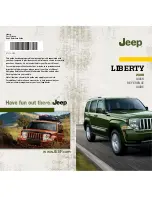
Country Radio type approval number
Brazil
1489-10-4415
Dubai
TRA, Registered NO
0016161/08
TRA, Registered-NO
ER0076990/11
Morocco MR6706 ANRT 2011/ 17.
November 2011
MR5526 ANRT 2010/ 27. April
2010
Philip-
pines
ESD-XXXXXXX
Singa-
pore
Compliance with IDA Standard
N0140-09
South
Africa
TA-2008/1068
TA-2011/1370
Changing a wheel
Flat tyre
You can find information on what to do in the
event of a flat tyre in the "Breakdown assis-
tance" section (
Y
page 336). You will also find
information on driving with MOExtended
tyres in the event of a flat tyre.
You can find information on what to do in the
event of a flat tyre in the "Breakdown assis-
tance" section (
Y
page 336). You will also find
information on driving with MOExtended
tyres in the event of a flat tyre.
Interchanging the wheels
G
WARNING
Interchanging the front and rear wheels may
severely impair the driving characteristics if
the wheels or tyres have different dimensions.
The wheel brakes or suspension components
may also be damaged. There is a risk of acci-
dent.
Interchange front and rear wheels only if the
wheels and tyres are of the same dimensions.
!
On vehicles fitted with a tyre pressure
monitor, electronic components are loca-
ted in the wheel.
Tyre-fitting tools should not be applied in
the area of the valve, as this could damage
the electronic components.
Only have tyres changed at a qualified spe-
cialist workshop.
Interchanging the front and rear wheels of
differing dimensions can render the general
operating permit invalid.
Observe the instructions and safety notes in
the "Fitting a wheel" section (
Y
page 363).
The wear patterns on the front and rear tyres
differ, depending on the operating conditions.
Interchange the wheels before a clear wear
pattern has formed on the tyres. Front tyres
typically wear more on the shoulders and the
rear tyres in the centre.
On vehicles that have the same size front and
rear wheels, you can interchange the wheels
every 5000km to 10,000 km depending on
the degree of tyre wear. Maintain the direc-
tion of tyre rotation.
Clean the contact surfaces of the wheel and
the brake disc thoroughly every time a wheel
is interchanged. Check the tyre pressure and,
if necessary, restart the tyre pressure loss
warning system or the tyre pressure monitor.
Direction of rotation
Tyres with a specified direction of rotation
have additional benefits, e.g. if there is a risk
of aquaplaning. You will only gain these ben-
efits if the correct direction of rotation is
observed.
An arrow on the sidewall of the tyre indicates
its correct direction of rotation.
362
Changing a wheel
Whee
ls
and
tyres
Содержание CLS 2012
Страница 2: ......
Страница 3: ......
Страница 5: ......
Страница 29: ...26...
Страница 99: ...96...
Страница 227: ...224...
Страница 292: ...Useful information 290 Stowage areas 290 Features 303 289 Stowing and features...
Страница 321: ...318...
Страница 322: ...Useful information 320 Engine compartment 320 Service 324 Care 325 319 Maintenance and care...
Страница 355: ...352...
Страница 403: ...400...
Страница 404: ......
Страница 405: ......
















































